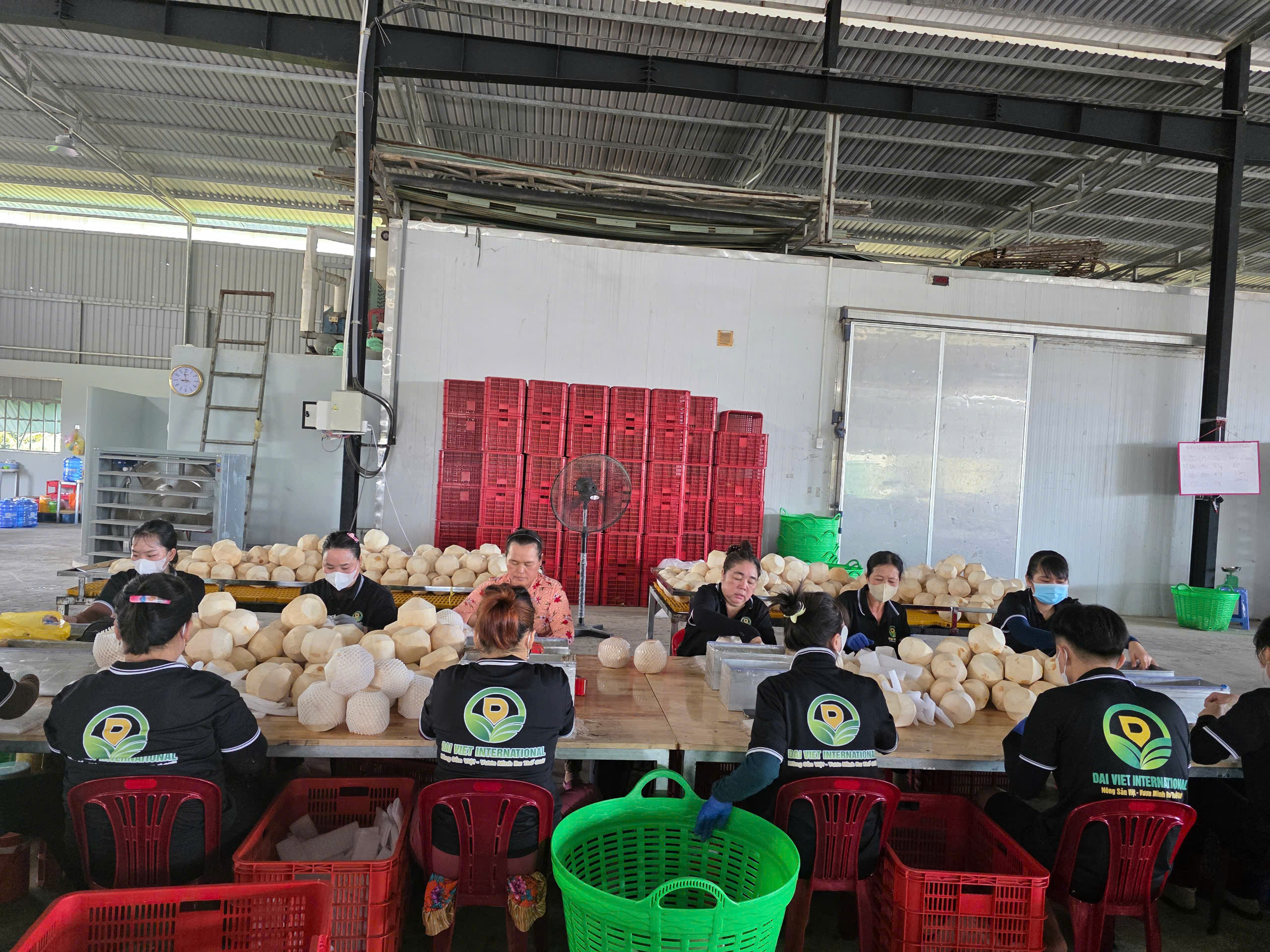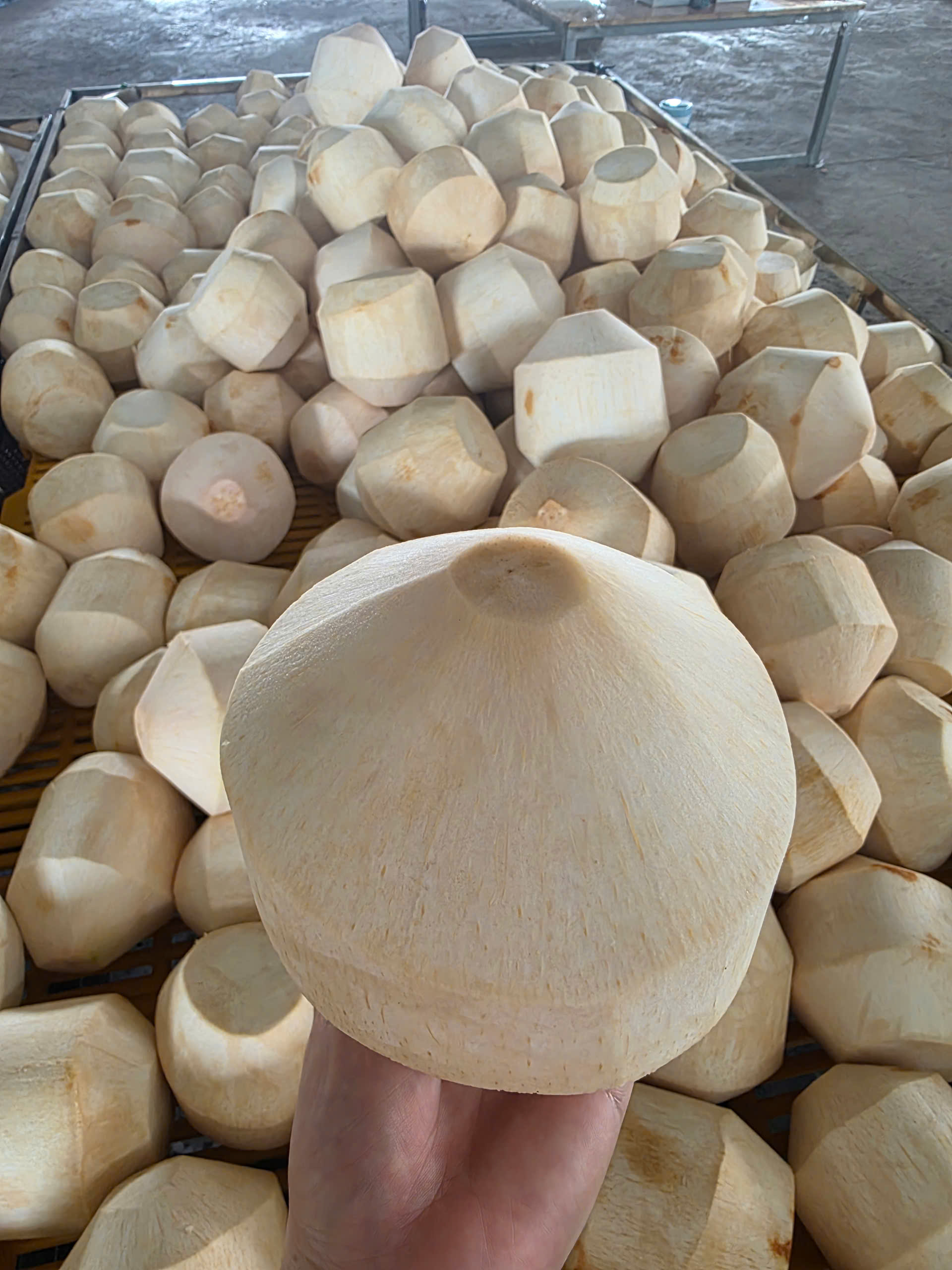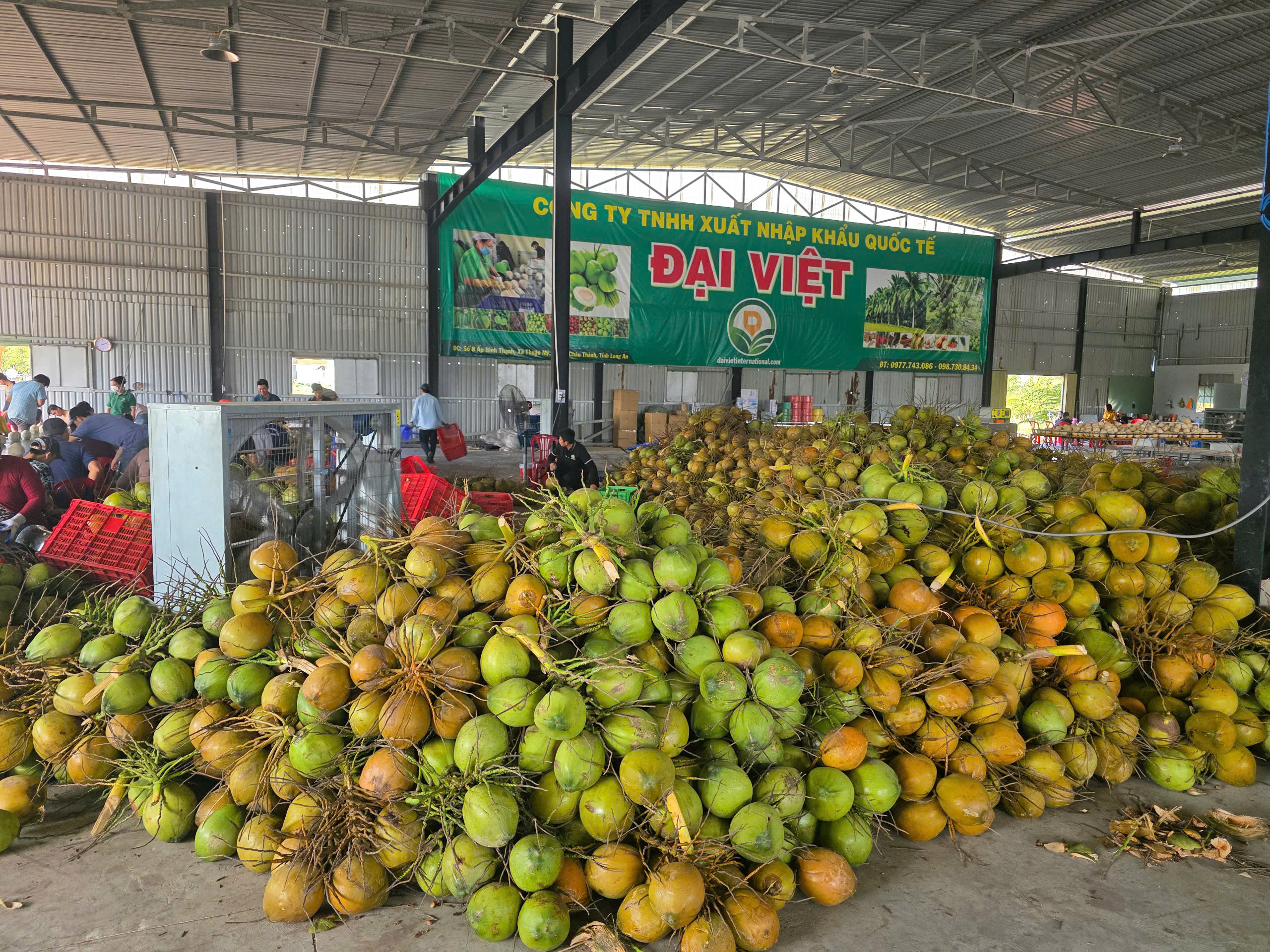Difference coconut type for export is an important factor to help businesses and importers choose the product suitable for each international market. Currently, Vietnam has three groups of key coconut products in export: green Siamese coconut, organic coconut and processed coconut. Differences in coconut types for export of each type has its own characteristics of quality, nutritional value, production process as well as consumption market.
Understanding this difference not only helps to improve the competition of Vietnamese coconut, but also opens up many solid opportunities on the global scale.
Difference coconut type for export

>> SEE MORE: Vietnam Fresh Coconut Supplier – Exporting Fresh Coconut in Large Quantity
Green Siamese coconut – he most popular coconut in export
Outstanding features
- Flavor: fresh water is cool, rich in natural minerals.
- Size: Average, suitable for direct purchase.
- Main market: Middle East, China, EU and US.
Use
- Explain natural thirst: Green Siamese coconut water has a sweet taste, low calories, contains many minerals such as potassium, sodium, magnesium, suitable for refreshing needs, especially in hot climates.
-
F&B service: Used by restaurants, hotels and cafes to prepare drinks, mocktails, cocktails, and smoothies.
-
Daily nutrition: Provides a source of natural, healthy drinking water, in line with the trend of “healthy lifestyle”.
Advantages
- More competitive price compared to many other Southeast Asian countries.
- Stable quality products, can supply large orders.
- Easy management in refrigerated containers.
Limitations
- Not the highest quality product.
- Limited shelf life if not handled properly with cold storage standards.
Suitable customers
- Distributors, supermarkets, wholesale markets.
- Large quantity orders, affordable prices.

Organic coconut – Premium product in export
Highlights Production
- Process: Organic farming, no chemical pesticides.
- International certifications: USDA Organic, EU Organic, Halal, GlobalGAP.
- Added value: Towards the high-end market and green consumption.
Uses
- Highend processing materials: Organic coconut rice is used to produce coconut oil, coconut milk, coconut powder, meeting the organic food and cosmetics market.
- Healthy food: Organic coconut water does not contain preservatives, no chemicals, in line with the trend of green, clean, and sustainable consumption.
- Popular in fastidious markets: European countries, the US, and Japan prioritize importing products with organic certification, creating high added value.
Advantage
- Meet the needs of modern consumers: organic, green, clean.
- The selling price is 20-30% higher than ordinary coconut.
- In line with the trend of “clean eating, clean drinking” in Europe, the US, and Japan.
Restrict
- The production process requires high time and cost.
- No country is willing to pay extra for organic infrastructure.
Suitable customers
- Highend supermarkets, restaurant chains, international hotels.
- Users of products prioritize cleanliness and organic certification.
Processed Coconut – Value Added Products
Highlights
- Including: canned coconut,cupped,coconut water, dried coconut rice, coconut oil, coconut shell charcoal.
- Can be exported far away while still ensuring quality.
- Meet the needs of the F&B, food and cosmetics industries.
Uses
- Variety of products: Including dried coconut rice, virgin coconut oil, canned coconut water/tetra pak, coconut shell charcoal, coir.
- Industrial Applications: Coconut shell charcoal and coir are used in the production of active fibers, high-tech agriculture and biomaterials.
- Advantages for export: Processed coconuts have a long management period, easy to transport, and are suitable for the global supply chain.
Advantages
-
Much longer shelf life compared to fresh coconuts.
-
Diversification of products, expanding export markets.
-
High added value, helping to elevate the Vietnamese brand.
Limitations
-
Requires modern processing technology and significant investment.
-
Dependent on strict international food safety standards.
Target Customers
-
F&B enterprises, confectionery, and cosmetics manufacturers.
-
Distributors seeking high-margin, value-added products.

Difference coconut type for export Varieties at Dai Viet
Product diversification to meet multiple market segments
-
Green Siam Coconut: Suitable for large-scale exports to supermarkets, wholesale markets, and distributors. Its advantages include competitive pricing, stable supply, and high consumer demand.
-
Organic Coconut: Certified by GlobalGAP, Organic, and HACCP, targeting premium market segments where customers demand clean, safe, and sustainable products.
-
Processed Coconut (peeled, cup-packed, bottled coconut water): Convenient and time-saving, particularly attractive to the F&B sector, restaurants, hotels, and the modern retail market.
With this diversity, Đại Việt can serve a wide range of customers, from mass-market to high-end segments, thereby expanding its international client network.
Difference coconut type for export Varieties in Terms of Adaptability to International Market Demands
Markets such as the UAE, Europe, the United States, and Japan each have different requirements for product quality standards and packaging formats.
With its diverse product portfolio, Dai Viet can easily customize and adapt its coconuts to meet the specific needs of each market, thereby increasing its ability to penetrate, conquer, and maintain long-term partnerships.
Difference coconut type for export Varieties Affirming the Prestige of the Vietnam Brand
These specialized products are closely tied to international production standards such as GlobalGAP, HACCP, ISO, and Halal.
This not only enables Đại Việt to increase sales but also enhances the global positioning of Vietnamese coconuts within the international supply chain.
Key Highlights of the Difference coconut type for export Varieties
-
By Market Segment: Green Siam coconuts serve the mass market; organic coconuts target the premium segment; while processed coconuts focus on the F&B industry and modern consumer demand.
-
By Value: Fresh coconuts provide stable profits, organic coconuts strengthen brand credibility, and processed coconuts deliver outstanding added value.
-
By Market: Each coconut variety is suited to different international markets, enabling businesses to flexibly approach and expand their export opportunities.
Comparison Table: Difference coconut type for export
| Coconut Type | Key Characteristics | Export Price (USD/unit) | Main Markets | Target Customers |
|---|---|---|---|---|
| Green Siam Coconut | Sweet and refreshing, high water content, most popular | 0.35 – 0.55 | Middle East, China, USA | Supermarkets, wholesale markets |
| Organic Coconut | Cultivated organically, certified (GlobalGAP, Organic) | 0.50 – 0.80 | Europe, USA, Japan | Premium supermarkets, 5-star hotels |
| Processed Coconut | Packaged coconut water, coconut chips, coconut oil | 1 – 3 (depending on product) | Global (F&B industry, Cosmetics) | F&B enterprises, manufacturers |
>> SEE MORE: Vietnam coconut export potential compared to Southeast Asian countries
Market Development Trends and Potential of the Difference coconut type for export Varieties
The differences among exported coconut varieties not only create a competitive advantage for Vietnamese enterprises but also open up long-term development opportunities:
-
Green consumption trend: Consumers in the U.S. and Europe are increasingly prioritizing organic, safe, and sustainable products. Therefore, organic coconuts are becoming a “hot” product line, enhancing brand reputation and increasing export value.
-
Product diversification: Processed coconuts such as packaged coconut water, dried coconut meat, and virgin coconut oil are considered an inevitable trend for the future. This product group has higher profit margins and is highly suitable for the F&B, cosmetics, and modern consumer sectors.
-
Stable supply: With large production volumes and competitive pricing, green Siam coconuts remain the mainstay, meeting the mass-market demand in the Middle East, China, and the U.S.
-
Competitive advantages of Vietnamese enterprises: Compared to Southeast Asian countries such as Thailand, Indonesia, and the Philippines, Vietnamese coconuts stand out with competitive prices, naturally sweet water quality, and stable supply capacity, making it easier to expand into international markets.
Clearly, leveraging the Difference coconut type for export varieties not only helps Vietnamese enterprises quickly adapt to international demand but also contributes to enhancing the global positioning of Vietnamese coconuts.
Why Choose Đai Viet as Your Trusted Partner?
-
Scientific and professional cultivation process
-
100% fresh and safe, meeting food hygiene standards
-
Certified with HACCP, FSSC 22000, and Halal
-
Strict control against genetically modified organisms (GMOs)
-
Rigorous monitoring of food contaminants
>> SEE MORE: Vietnam coconuts in the global food & beverage supply chain
The differences among exported coconut varieties can be identified in terms of flavor, quality standards, pricing, and target customers. While green Siam coconuts are suitable for the mass market, organic coconuts cater to premium segments, and processed coconuts open significant opportunities for the F&B sector and the food industry.
📩 Contact us today for consultation and detailed quotations:
-
Website: daivietinternational.com
-
Hotline: (+84) 977 743 086
Dai Viet – Partnering with Vietnamese agriculture to conquer global markets.



